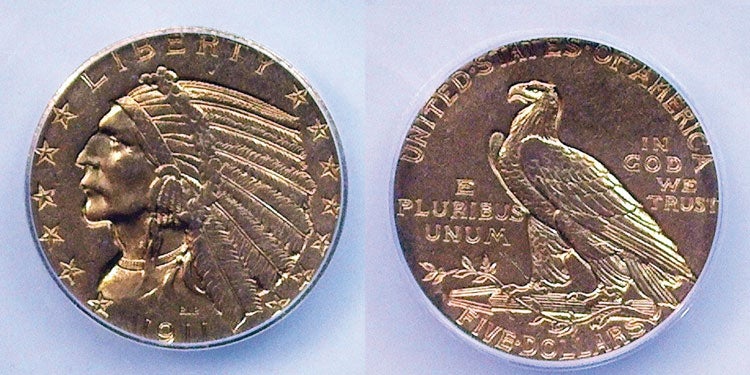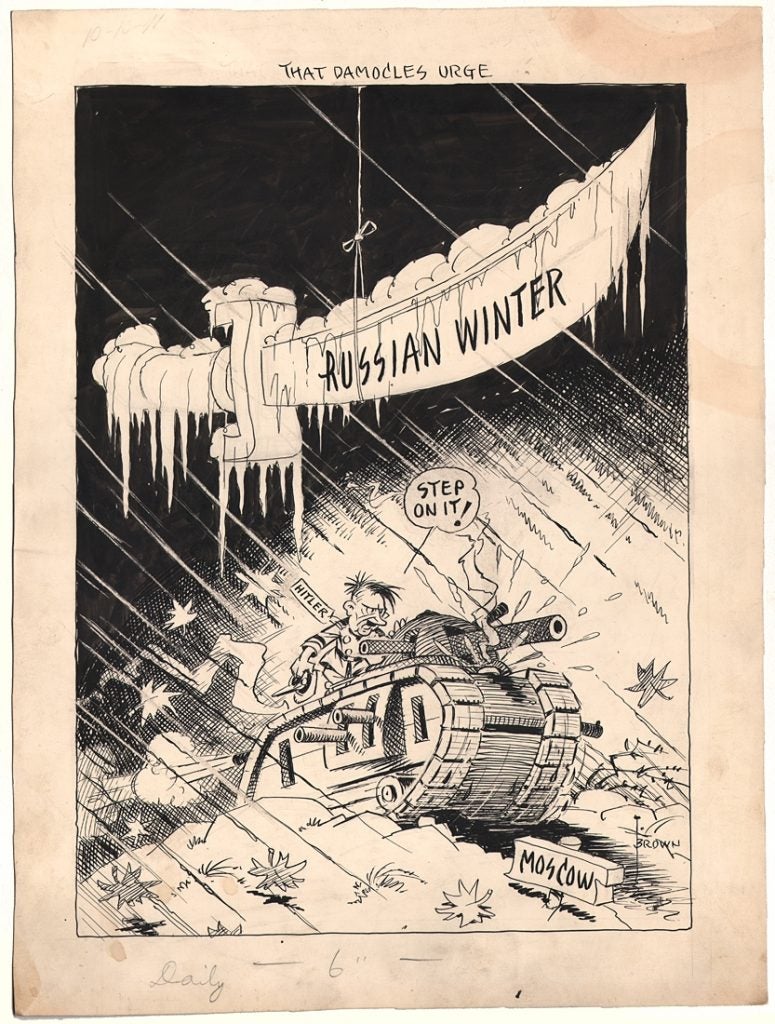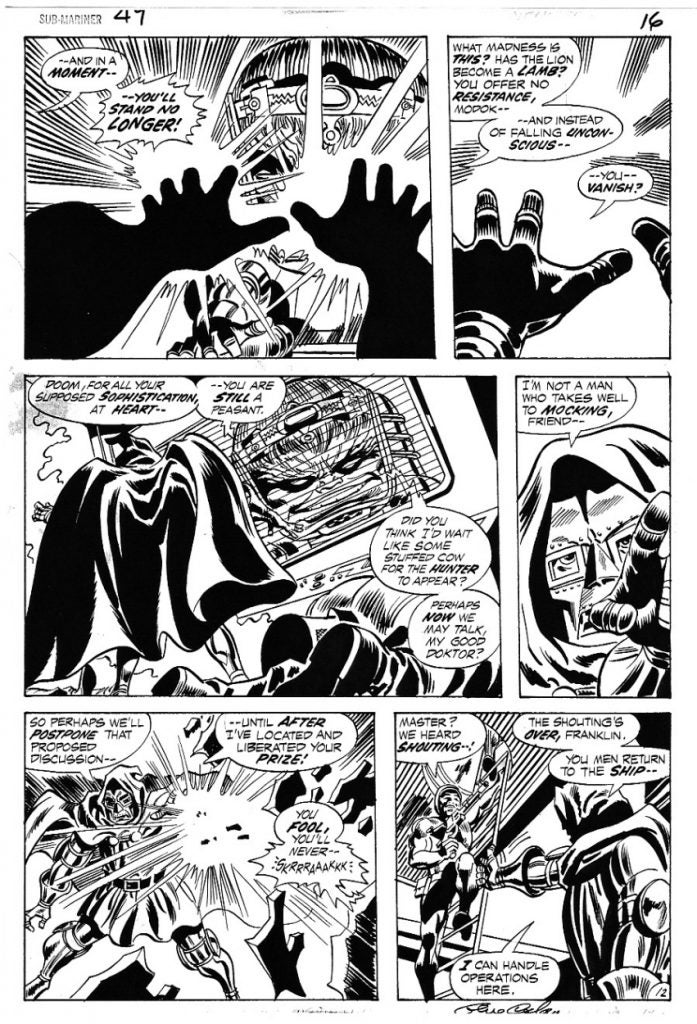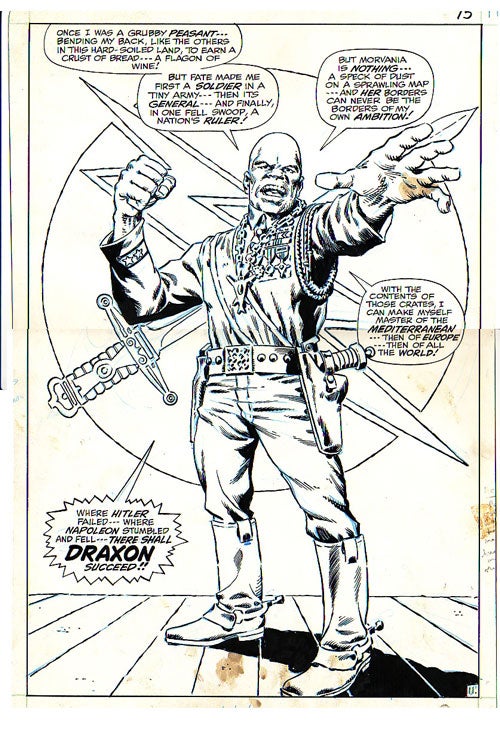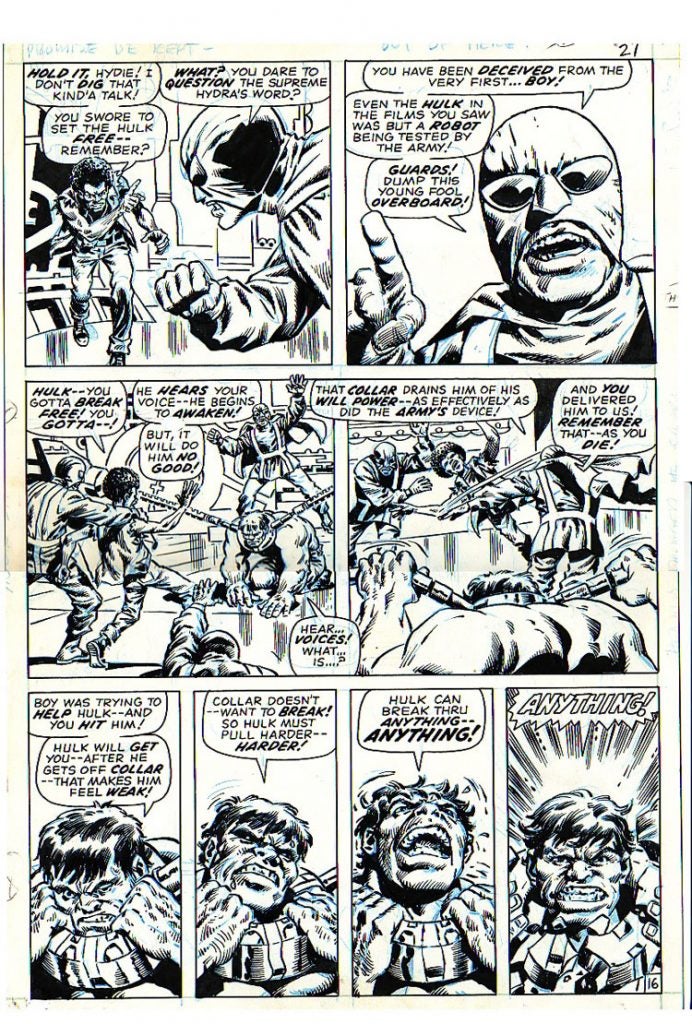
Incredible Hulk 132 p 16 (October 1970)
By Herb Trimpe (1939-2015) and John Severin (1921-2012)
13 x 20 in., ink on paper
Coppola Collection
Herb Trimpe was the definitive Hulk artist for the early run of the character’s “Incredible Hulk” stand-alone series, drawing all but 2 issues between 106-193, including the two issues that introduced the Wolverine character (180-181). The issues with John Severin as the inker are memorable for the strength of their collaboration. Severin had a strong sense of weight in his drawing style, which matched up well with Trimpe’s dynamic and thoughtful compositions.
“In the Hands of Hydra”
The Hulk’s friend, Jim Wilson, has been taken to a secret Hydra base where one of their leaders tells Jim that they have a common foe in the military and that they intend to rescue the Hulk. This is a trick of course, and Hydra manages to convince Jim to help them out after they show him a fake film reel of the Hulk being tortured with military weapons.
Jim helps Hydra airlift the Hulk’s body out of a military ship. Once they have the Hulk secured, the leader of Hydra tells Jim the organization’s true intentions of rescuing the Hulk: to brainwash the him into being a loyal member of Hydra. When Jim tries to attack the leader, the other Hydra agents hold him at bay. Watching his friend being roughed up by Hydra angers the Hulk, who breaks free of his bonds.
During the fight, Jim is hit in the crossfire and is injured causing the Hulk to become more enraged and start smashing the ship. This story is continued in the next issue, which I have a bunch of pages from.














